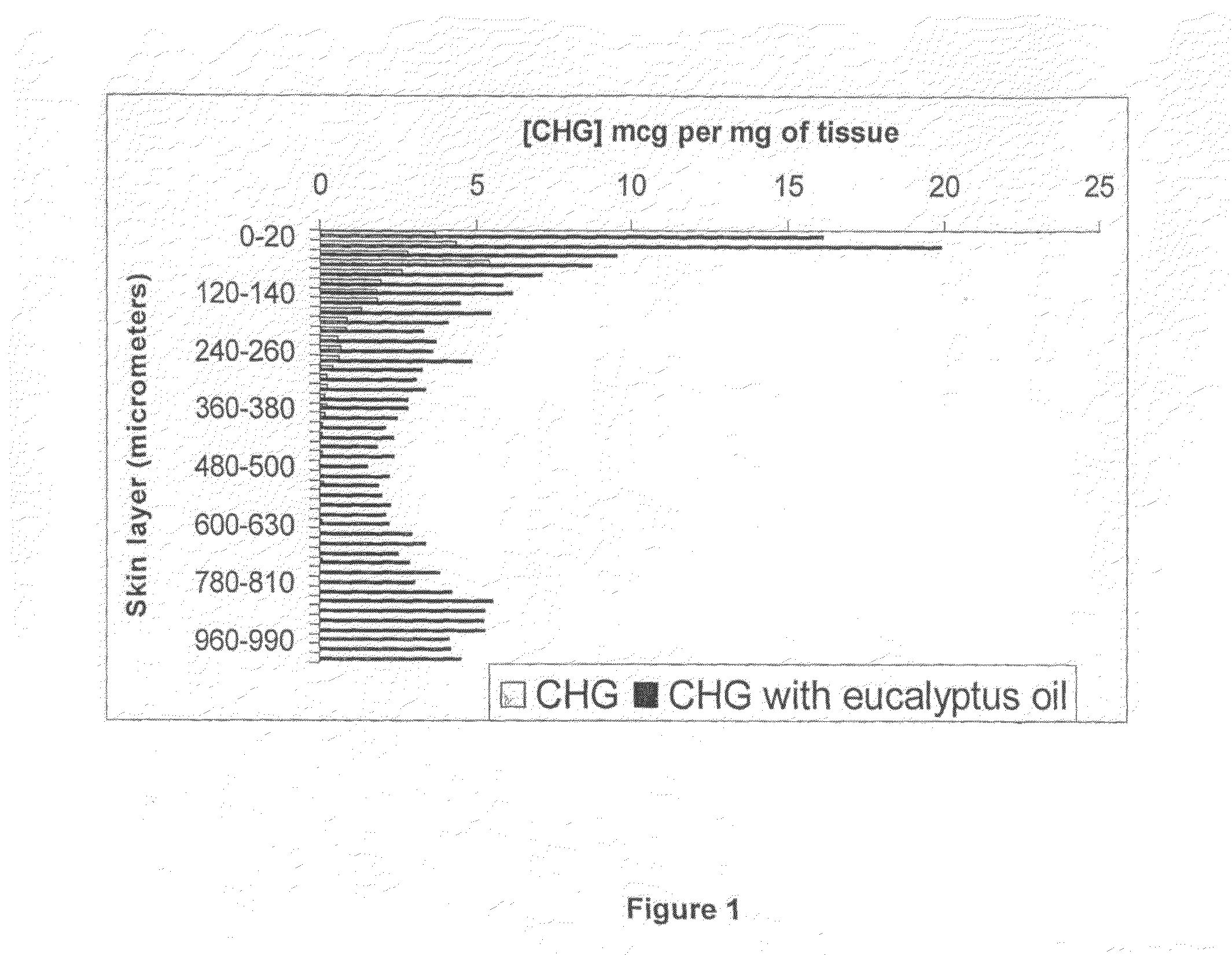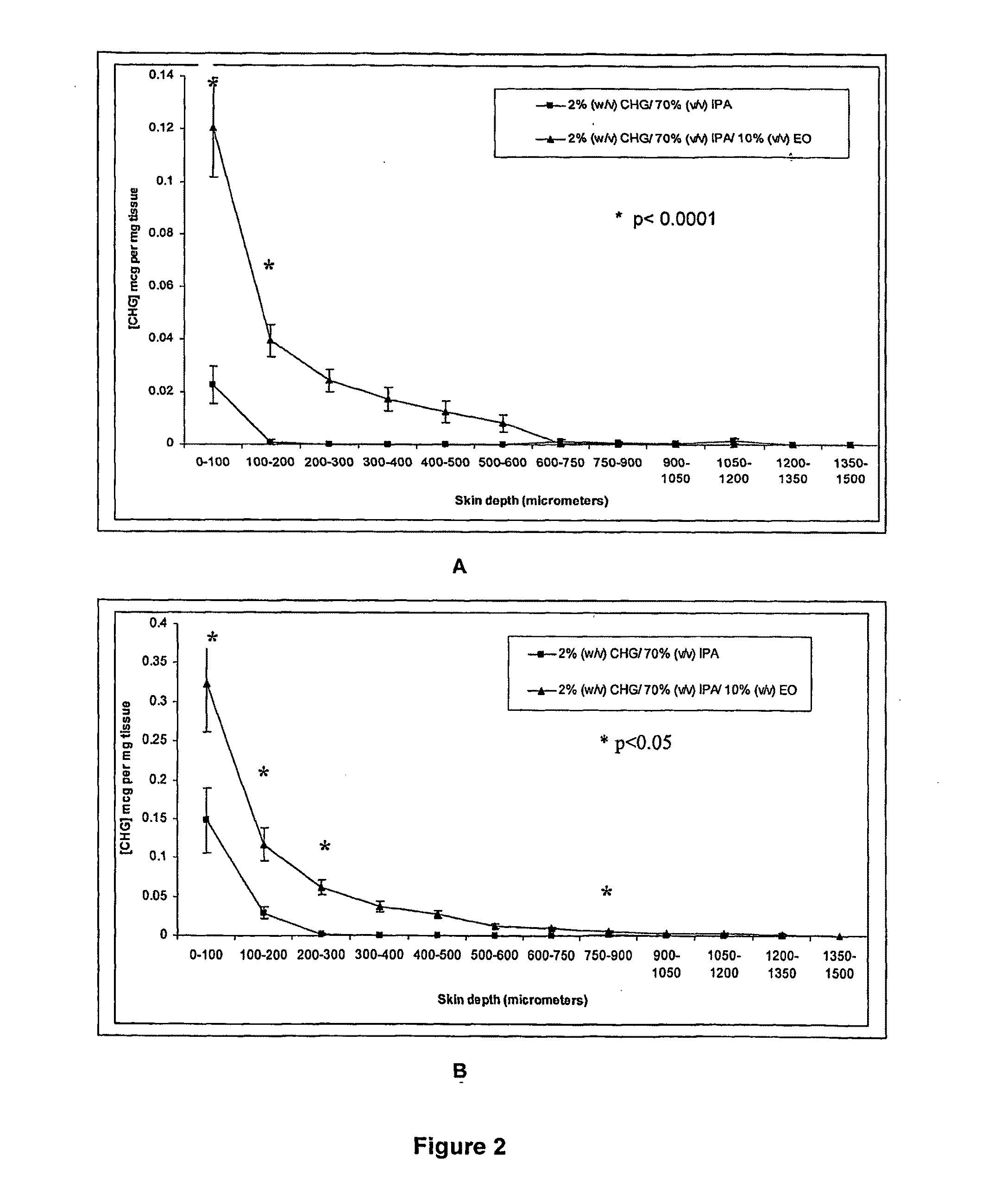Antiseptics
a technology of compositions and antibacterial agents, applied in the field of antiseptic compositions, can solve the problems of poor permeability into the skin, inability to effectively disinfect the skin, and inability to effectively control the growth of the hair follicle, and achieve the effect of increasing the skin permeation, enhancing the antimicrobial properties and permeation of the skin
- Summary
- Abstract
- Description
- Claims
- Application Information
AI Technical Summary
Benefits of technology
Problems solved by technology
Method used
Image
Examples
Embodiment Construction
[0021]The following preferences may be combined with one another, where appropriate.
[0022]Essential oils are known in the art and the term “essential oil” is to be given its usual meaning. For the avoidance of doubt, essential oils are volatile mixtures of terpenes and oxygenated compounds such as alcohols, aldehydes, ketones, esters and ethers, that are derived from plant material. These are described, for example, in Williams, et al., 2004. Essential oils can be produced according to any technique known in the art; the most common techniques involve distillation, cold pressing or solvent extraction of the essential oil from raw plant material.
[0023]In embodiments of the present invention that involve the use of chlorhexidine and at least one essential oil, a single essential oil may be used, or a combination of different essential oils. In a preferred embodiment, a single essential oil is used. Most preferably, this is eucalyptus oil.
[0024]Examples of essential oils i...
PUM
| Property | Measurement | Unit |
|---|---|---|
| depth | aaaaa | aaaaa |
| depth | aaaaa | aaaaa |
| depth | aaaaa | aaaaa |
Abstract
Description
Claims
Application Information
 Login to View More
Login to View More - R&D
- Intellectual Property
- Life Sciences
- Materials
- Tech Scout
- Unparalleled Data Quality
- Higher Quality Content
- 60% Fewer Hallucinations
Browse by: Latest US Patents, China's latest patents, Technical Efficacy Thesaurus, Application Domain, Technology Topic, Popular Technical Reports.
© 2025 PatSnap. All rights reserved.Legal|Privacy policy|Modern Slavery Act Transparency Statement|Sitemap|About US| Contact US: help@patsnap.com



